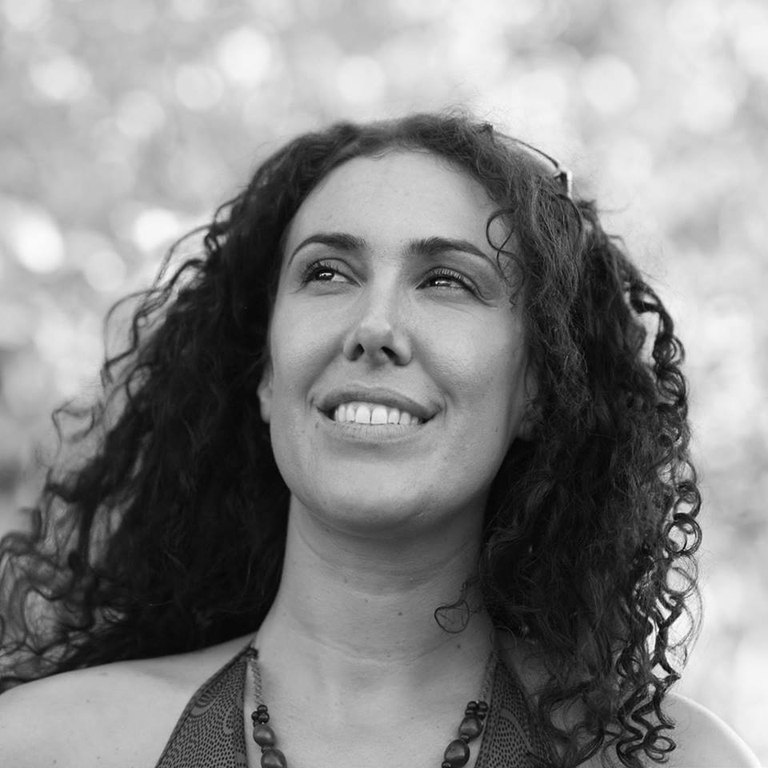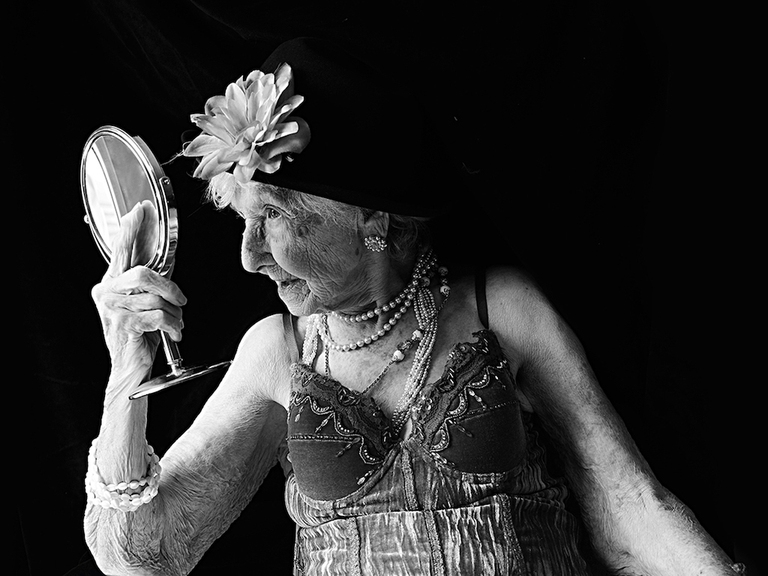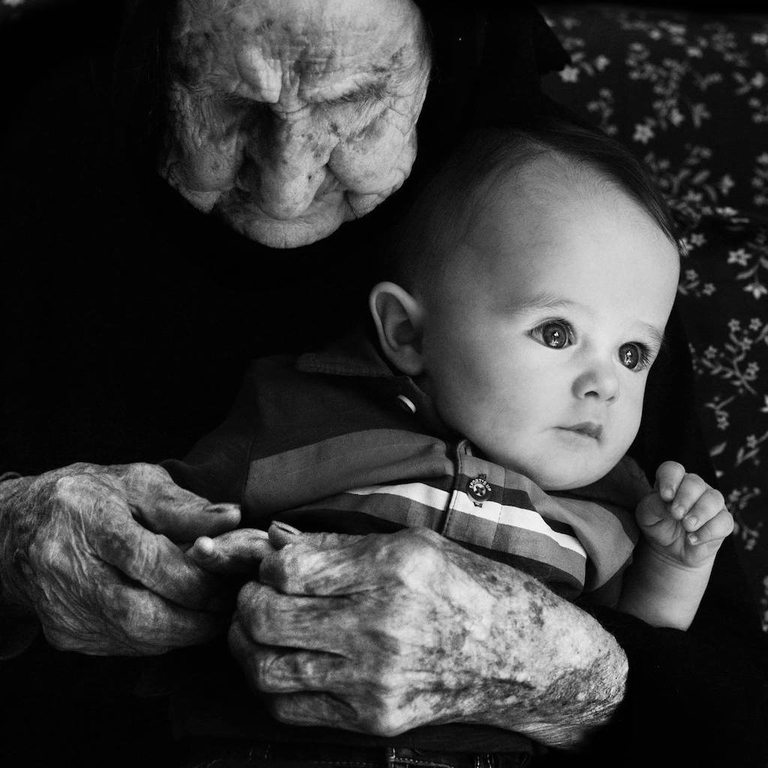
Homecast is a podcast series recorded in quarantine in which creatives from around the world share their lived experiences of these unique circumstances. Creator Giacomo De Poli tells us why this collective diary was needed now more than ever.
Leaving cliches behind, beauty and sexuality in old age are widely unexplored topics. Photographer Arianne Clément tells why she chose to shed light on this universe.
Each night I squeeze my Paul close to me, we’re like two spoons, and I hold him in my arms all night. Not even a fly could come between us.Christine, 88 years old
Paul is 101 years old. The tight embrace of his wife Christine, 88, is endless. Arianne Clément is a 39-year-old Canadian photographer known for her work exploring the hidden universe of beauty, sexuality and desire in old age. She has always pointed her lens at the margins, at those who are invisible and forced to leave this world, often too soon.
After obtaining a Master’s degree at the University of Arts London, Clément shifted her focus from photojournalism to documentary photography, travelling the world to uncover the truth through its contrasts: from serenity to angst, from compassion to cruelty. We met with the photographer, who rigorously portrays her subjects in black and white because she believes light is more important than colour. She told us how she came to dedicate the past few years to capturing the beauty of old age.
Do you aim to shine a light on unconventional protagonists in unexpected ways?
Yes, I couldn’t have said it better myself. In a society that associates beauty with youth, there’s a pervasive fear that comes with the idea of ageing. Society’s last remaining taboos are nudity and older people’s sexuality. These photos stand in contrast to these fears; the intimacy they reveal is something very close to a state of grace. Ways of being that can be nurtured, taught and learnt. A less tangible and more lasting essence, nothing to do with the cliches we’re used to in daily life.
You started with the project 100 years, age of beauty, dedicated to the beauty of centenarian women. How did it start?
Actually, the truth is that I didn’t have a clear direction at first. I knew I wanted to put these incredible women, discarded due to the social and cultural norms of mainstream society, under the spotlight. I’ve always been very sensitive to this. I started freely capturing all aspects of their daily lives, then I realised that looking good in front of the camera was the one thing they all worried about. These women and their search for beauty became the project’s centrepiece. When I say beauty I mean love, respect and acceptance of a body inexorably marked by the passing of time. These women take care of their bodies through a series of small, daily, almost obsessive rituals, which burst with vitality: from the choice of lipstick to the desire to nurture one’s passions, to having the courage to wake up every morning and wanting to feel attractive, despite everything.
In the following project, The art of ageing, you chose to focus on sexuality.
Marie-Berte Paquette, protagonist of 100 years, age of beauty, taught me that one can still be sexy at 102 years old. Without hesitation, she accepted to pose in her lingerie and after a two-hour photoshoot it was her son, aged 76, who intervened: “I think that’s enough mum, you can stop now”. He seemed exhausted and quite frankly, so was I. The same couldn’t be said about Marie-Berthe. She wanted to keep going, she wasn’t tired at all. She was marvellous, sensual and strong. She said, “I feel beautiful most of the time and when I don’t, I do everything I can to make sure I do!” Marie-Berthe, an extraordinary woman, left us recently. Her refusal to be conditioned by dominant aesthetic norms inspired and pushed me towards the nude and boudoir photography of the The art of ageing. This exhibition was presented in Arles, France during the 18th edition of the European Festival of Nude Photography. An event that led me to win gold and silver in two categories at the Moscow International Photo Awards.
How did you find the photographic subjects for this project?
It wasn’t easy at first. Whenever I asked people to pose so intimately, most refused at first – a natural response. Paul and Christine are good friends of mine and he was keen from the start, and managed to convince her. The photo of the two of them in bed was as an immediate success. It soon became viral on social media, triggering a number of requests. All of a sudden, the situation had turned itself on its head.
What kind of relationship did you develop with them?
It was a very precious exchange. On the one hand, the protagonists had finally conquered the spotlight with great courage, putting their fragility fearlessly on public display. On the other hand, I was observing and learning a totally different way of accepting one’s body. I’m very grateful for their trust and what they taught me.
What are you currently working on?
My new project is on the Blue Zones, the five regions of the world with the highest life expectancy compared to the average, by a significant margin, according to studies conducted by Italian researcher Gianni Pes and Belgian Michel Poulain in 2004. As a passionate traveler, I’m visiting these places to get to know the people who live there. I’ve been to Nicoya in Costa Rica and Ogliastra in Sardinia, a uniquely rural place with the highest concentration of registered male centenarians in the world. What struck me most there was the engrained family strucutre and natural respect reserved to old people living in the homes of their sons, daughters, grandchildren and cousins who look after them together. In Canada, this doesn’t happen. You get to a certain point where your only choice is to be sent to a care home.
Through their intense and potent narratives, Arianne Clément’s photographs restore a sense of truth that is out of the ordinary. In one picture, Paul is kissing his dear Christine surrounded by trees: nothing is missing, not even the sock marks on his calves. Because normality is a limit when it leaves out the natural depth and wealth of human beauty.
Siamo anche su WhatsApp. Segui il canale ufficiale LifeGate per restare aggiornata, aggiornato sulle ultime notizie e sulle nostre attività.
![]()
Quest'opera è distribuita con Licenza Creative Commons Attribuzione - Non commerciale - Non opere derivate 4.0 Internazionale.
Homecast is a podcast series recorded in quarantine in which creatives from around the world share their lived experiences of these unique circumstances. Creator Giacomo De Poli tells us why this collective diary was needed now more than ever.
Time magazine’s 100 Women of the Year project sheds light on influential women’s stories, from Amelia Earhart to Greta Thunberg. A selection of some of the greats for International Women’s Day.
Un violador en tu camino – the rapist is you – is an anthem protesting the impunity of gender-based violence. It began in Chile and has become a global flash mob, bringing people to the streets and resonating all over the world.
The Oxford English Dictionary has chosen “climate emergency” as 2019’s Word of the Year because of its effectiveness in communicating a sense of urgency in the fight against global warming.
Filmmaker Dhondup Wangchen was imprisoned by the Chinese government for his documentary condemning the Tibetan condition. He tells us how he continues to fight for his people even after the traumas faced.
To mark the release of Anthropocene: The Human Epoch, we interviewed photographer and co-director Edward Burtynsky, who told us the story behind the documentary.
Snowflakes can be deceiving. Banksy transformed them from a marker of winter festivities into a symbol of the plague of air pollution in his mural Season’s greetings in Port Talbot, Wales.
Artist Jeff Hong imagined how Disney fairy tales’ characters would live in the real world: the result – or better the ending – is everything but happy.
N’we Jinan is a Canadian record label that gives First Nations students their voice back by allowing them to create their own music in mobile recording studios.










